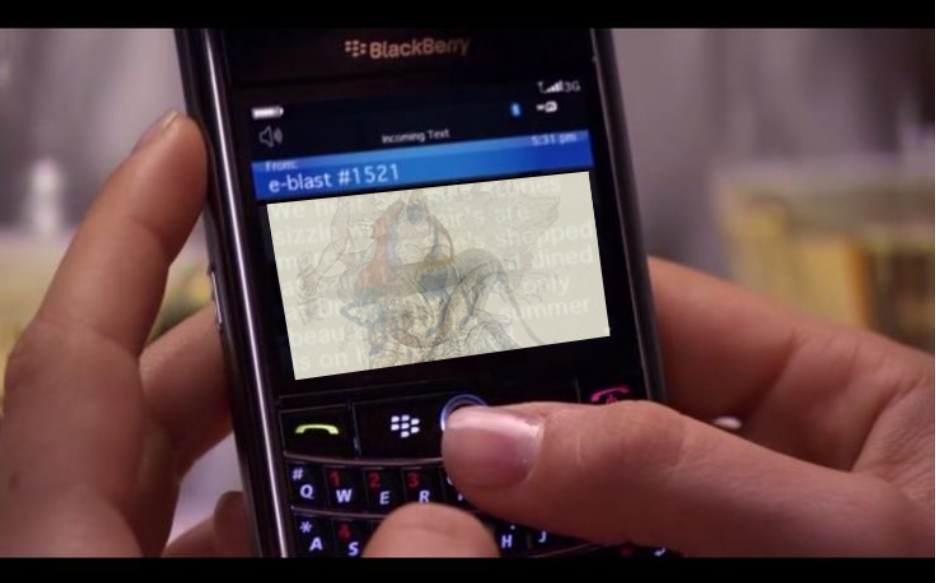Gossip Girl Redux
Contributor
Mimesis
Gossip rules the world. Consider a bigger, more democratically owned narrative machine than gossip. Consider a collective palimpsest constantly creating networks of threads linking one to another, at the same time, reweaving itself over and over. Gossip is the “operational text” 1 .
XOXO
It is perhaps not entirely surprising that the ghost writer behind the ever-haunting character “gossip girl” was the lone writer of the social scene, set at a fictional Upper East Side high school in the cult TV show that aired in the 2000s. The character itself, an aspiring writer who would later on be published in the New Yorker, fueled the character/media as a narrative machine throughout the series, entangling life with fiction. The ghostly presence of gossip was embodied by Kristen Bell’s sly, ultra feminine voice, and casted in the reflections of short yet crafted pieces of texts, sometimes accompanied by low-resolution photos on the screen of a Blackberry. Gossip girl was never the beholder of truth (though sometimes resembling a figure like god); she writes and rewrites herself, and as her consumers thereby also are her feeders of sources and materials —a narrative machine of multiplicity. The “real” becomes manipulated by gossip to be a medium that performs, that writes its own scripts.
Interactive Palimpsest
Celebrity culture–fueled gossip machines lubricated by crowdsourcing and Instagram and Twitter have not surprisingly refreshed the popular imagination and access to “personal” information at a speed at which the tabloids cannot keep up. People in design love to gossip. When work entangles with life, jealousy and lust fills the room. Which partner broke up? Who was seen with someone much younger? Who slept with whom in Venice? Who ended up marrying a student? Who said something mean about someone else? Who is doing lines at that hotel bar? And with its own set of baggage of celebrity culture, design begins to have its own “deux mois.” Words of many mouths that inadvertently become transcribed online into “stories,” “posts” and democratically editable files on the cloud. The social clout that gossip brings is inadvertently more than the theorization of that subject’s oeuvre. The kissing of the surfaces matter less than the kissing of the mouths in the realm of curiosity towards architecture. The gossip matters more than the discourse. The discourse is half gossip.
Parasite, Chimera.
The talk that happens around the talk. On the talk. Below the talk. Inside of the talk. The chatter, disruption, information mediated by murmuring. Michel Serres’s conception of the parasite is borrowed here in the collaging of gossip. To further confuse the reader, the figure of the chimera herein assembles a denkfigur that renders the host and the parasite. The parasite eavesdrops for the information, and replicates and passes it on to another. The “small” players bring distress to the big guy. The making of the chimera then becomes the collaging of facts and their exchange, often in secret. Just as the parasite is defined in relation to a well-functioning system, a chimera is defined in relation to a fully formed, contained body. As Michel Serres writes, “There are channels, and thus there must be noise. No channel without noise.” These channels with their architectural forms (think eaves, think gutters) nevertheless produce the unexpected for the architects. As the “heroes” of the odysseys are constantly haunted by these mutant creatures, the parasite of gossip now (hopefully) haunts the shitty men in architecture. But just as parasites can never kill the host, there is no end to the story. The chimera always exists as an assemblage, peeking through the leaves in the wild.

Figure 1: Gossip Girl as a palimpsest of chimeras. Image by author.
- As opposed to the “operational image” proposed by Harun Farocki. ↩︎